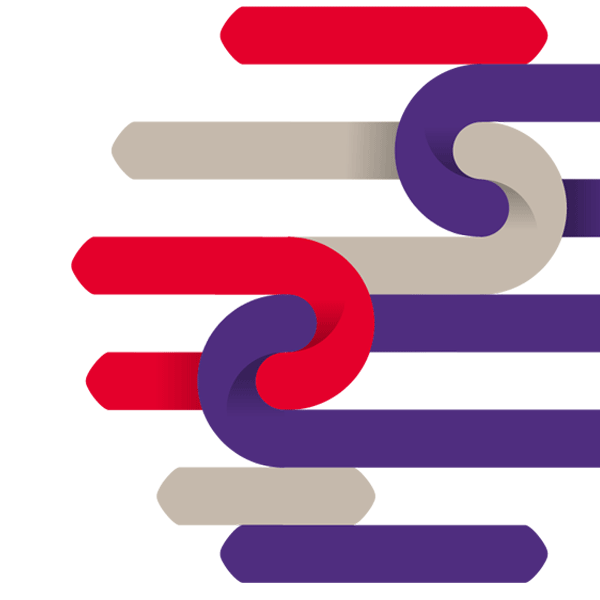-
Financial statements audits
Financial statements audits
-
Financial statement reviews
Financial statement reviews
-
Financial statements compilations
Financial statements compilations
-
IFRS
IFRS
-
Audit quality monitoring
Audit quality monitoring
-
Global audit technology
Global audit technology
-
Systems and risk assurance
Systems and risk assurance
-
General business consulting
General business consulting
-
Market research
Market research
-
Sustainability
Sustainability is indeed a broad concept. Aside from mitigating the environmental changes caused by the interaction of the industrial world and society with nature, social and governance matters are subjected to increased public and government scrutiny, calling for the promotion of a sustainable performance agenda.
-
Business planning and performance improvement
Business planning and performance improvement
-
Change and program management
Change and program management
-
Business intelligence and analytics
Business intelligence and analytics
-
Business valuation and litigation support
Business valuation and litigation support
-
Business process outsourcing and consulting
Business process outsourcing and consulting
-
Family business consulting
Our business solutions for family businesses center on alignment of all aspects of the family and business, including culture, vision, mission, values, governance, ownership, leadership, communication and policy development.
-
Quantitative small caps
Grant Thornton has a wide professional network with a vast array of technical skills that is coupled with a drive to understand the business problem; we can set up the most efficient financial risk management structure that fits your underlying business structure and your risk appetite.
-
Data analytics
Data analytics is the process through which businesses leverage data to gain actionable insights and enhance their performance. This is based on a solid foundation of well-organised and accurate data. Many businesses have a large amount of data at their disposal however, most of them do not have the expertise to analyse the available data.
-
Grants and Funding
At Grant Thornton, we specialise in providing comprehensive assistance to navigate the complex landscape of National and European Union (EU) funding. Our team of experts are dedicated to assisting you to access the financial resources you require to turn your vision into reality.
-
Bookkeeping & financial accounting
Bookkeeping & financial accounting
-
Payroll and personnel administration
Payroll and personnel administration
-
Direct and Indirect tax compliance
Tax compliance within outsourcing
-
Compilation of financial statements
Compilation of financial statements
-
Business process outsourcing
Business process outsourcing including back office and secretarial
-
Family business consulting
Family business consulting
-
Startups
Startups
-
Company formation
Company formation
-
BOR
Entities in Malta, including companies, partnerships, foundations, trusts and associations, have an obligation to disclose the ultimate beneficial owner/s (physical person) of the entities. A beneficial owner is defined as the individual (s) who ultimately owns or controls a legal entity or arrangement through direct or indirect ownership of a sufficient percentage of the shares or voting rights or ownership interest in that entity.
-
Internal audit
Internal audit
-
Risk management and internal controls consulting
Risk management and internal controls consulting
-
Governance and risk management
Governance and risk management
-
Regulatory services
Regulatory services
-
Risk modelling services
Risk modelling services
-
Forensic and investigation
Forensic and investigation
-
Compliance audit
A compliance audit is a detailed review which focuses on whether an organisation is in conformity with statutory laws as well as internal rules and decisions. This type of audit also assesses the effectiveness of an organization’s internal controls by identifying weaknesses in compliance processes whilst finding measures to enhance such processes.
-
Citizenship by naturalisation
The Maltese Citizenship Act (Cap 188) establishes who may become a citizen of Malta by naturalisation, provided that the applicant satisfies the relative provisions.
-
Citizenship for Exceptional Services by Direct Investment
With the continuously changing global dynamics and evolving geopolitics, there is an ever-growing number of highly-talented high-net-worth individuals who are willing to invest and relocate to give themselves and their family members the chance to broaden their horizons and become part of a welcoming community.
-
Grant of Citizenship for Exceptional Services
Malta has enacted legislation which extends to individuals providing excellent or manifestly superior contributions in the fields of science, research, sports, arts and culture as well as people of exceptional interest to the Republic of Malta, the right to become Maltese citizens.
-
Acquisition of citizenship by registration
The Maltese Citizenship Act (Cap 188) establishes who can register as a citizens of Malta. The Act was amended on 1st August 2007, this making it possible for second and subsequent generations born abroad to acquire Maltese citizenship by registration.
-
Maltese Family Businesses Resource Centre
For over 30 years Grant Thornton’s advisory teams have assisted family businesses in navigating the challenges of leadership and succession across generations
-
Grooming
Preparing the next generation for leadership and ownership is an integral part of any succession process. Grant Thornton can help formulate the necessary grooming plan for all the potential successors.
-
Tax services
Using a combination of reason and instinct, we can work with clients to develop a strategy that helps them understand and manage their tax liability in a transparent and ethical way.
-
Access to finance
Like all companies, family businesses need finance. As an ongoing business concern looking at expanding, when it comes to raising capital, it’s important that this is done wisely to minimise the risk of collateral damage.
-
Governance
Having a proper governance structure is essential to ensure that the family and business strategies are achieved. Grant Thornton can advise on this, and facilitate the implementation of the ideal governance structure based on the exact scenario.
-
Ownership succession
Letting go of your family business is difficult for all owners and even more so for founders; however, in a family business the additional challenge presented by the family component increases the complexity of this process. Our team of family business advisors will ensure that such ownership issues are dealt with in an effective and structured approach.
-
Exit strategies
There are many 'exit strategies' that need to be considered to minimise the risk of conflict. They can arise from the eventual exit of a family member from the ownership ranks and can have many causes. See how we can help.
-
Management succession
By implementing our family business guidelines to family succession and a proper governance structure, the management succession process can be completed with minimal conflict and will result in the most competent successor being chosen.
-
DORA Consultancy
Firms within the financial sector face a critical imperative to fortify their operational resilience in the digital sphere, particularly with the advent of the Digital Operational Resilience Act (DORA), set to take effect by January 2025.
-
Cyber security Consultancy
Whether you are a multinational corporation, a small business, or an individual, the digital realm holds equal importance for us all.
-
IT business consultancy
IT business consultancy serves as a crucial bridge between technical solutions and strategic business objectives. Through comprehensive analysis, we identify opportunities for efficiency and innovation, providing actionable recommendations to enhance processes and maximise ROI.
-
Technology Implementation & Project Management
Efficiently implementing new technologies or upgrading existing systems demands meticulous planning, strategic execution, and seamless integration. GT serves as a guiding force, steering businesses through complexities and facilitating a structured approach to technology adoption.
-
IT Audit and Assurance
Information systems strengthens an organisation’s financial and operational processes. Grant Thornton Malta strengthens your organisation’s need for IT and information assurance.
-
Case Studies
Digital transformation has transitioned from being an option to a necessity. The race is on... The question is, are you ready?
-
Operational and financial restructuring and reorganisation
Operational and financial restructuring and reorganisation
-
Recovery
Recovery
-
Financial regulatory services
Financial regulatory services
-
GDPR consultancy
The General Data Protection Regulations (GDPR) have transformed the way we handle personal data. This regulation is a game-changer for businesses operating within the EU, or the handling of EU citizens' data worldwide.
-
Ship and aircraft registration
Ship and aircraft registration
-
Medical cannabis licensing in Malta
A study published in 2018 by market intelligence and strategic consultancy firm Prohibition Partners, has forecasted that the European cannabis market will be valued €115.7 billion by 2028. According to the same study, while patient numbers are currently below 100,000 across the region, their number is set to grow to over 30 million in the next decade. In 2018 Malta introduced a bill to legalise the use of medical marijuana and attract companies willing to produce high-grade medical cannabis for the European market.
-
Trust and trustee services
As an entrepreneur, business owner, parent or guardian, you will want to ensure that whatever happens in the future, the rewards from your hard work can be protected as efficiently as possible. Grant Thornton Fiduciaire Limited (Grant Thornton) understands this and provides a professional and holistic trust management service.
-
Family trusts
The law establishes the requirement of a license for one to be able to act as a trustee subject to certain limited exceptions. One such exception is found in the Rules for Trustees of Family Trusts which provide for an exception to this rule where a trust is set up to hold property settled by a settlor or settlors for the present and future needs of family members or of family dependants who are clearly identifiable.
-
Programmes
Grant Thornton is authorised and regulated by the Government of Malta to handle and submit applications for both citizenship applications as well as residence permits under the various residence programmes available in terms of Maltese law.
-
Ordinary residency in Malta
Any EU, EEA or third country national who resides in Malta for more than 3 months is obliged to apply for a Residence Permit. There are various grounds upon which an applicant may apply to require a residence permit, including: Self-Sufficiency, Employment or Self-Employment, Family Members, Permanent Residence, Study Purposes.
-
Qualifying Employment in Aviation Rule
Malta provides qualified persons employed in the field of aviation with an opportunity to enjoy a 15% flat personal tax rate on income generated from their direct employment in Malta. For a candidate to qualify, their annual income must exceed €45,000. This does not include the value of fringe benefits and applies to the derived income received from an eligible office.
-
Qualifying Employment in Innovation and Creativity (Personal Tax) (Amendment) Rules, 2019
These Rules allows persons employed in a role directly engaged in carrying out, or management of research, development, design, analytical or innovation activities, to enjoy a 15% flat personal tax rate on income generated from their direct employment in Malta.
-
Qualifying Employment in Maritime and Offshore Oil & Gas Industry Rule
Malta provides qualified persons employed in the field of aviation, with an opportunity to enjoy a 15% flat personal tax rate on income generated from their direct employment in Malta.
-
Nomad Residence Permit
The NOMAD residence permit, which was launched in June 2021, allows third-country nationals who would normally require a Visa to travel to Malta, to retain their current employment based in another country whilst legally residing on the island.

-
Direct international tax
Direct international tax
-
Indirect international tax
Indirect international tax
-
Global mobility services
Global mobility services
-
Transfer pricing
Transfer pricing
-
Estate planning
Estate planning
-
Wealth advisory
Wealth advisory
-
Regulatory and legal
Regulatory and legal
-
Corporate tax services
Corporate services
-
VAT
At its simplest, VAT is a tax on consumption and is a multi-stage tax (ie applied at every stage of the production process), which is applied to both goods (ie tangible property) and services. Additionally, although the tax is ultimately borne by the consumer (by getting included in the price paid), responsibility for charging, collecting and passing the tax on to the tax authorities, rests with the supplier.
-
2018 Amendments of the Income Tax Act
The following is a brief overview of the new tax provisions introduced in 2018 by the Budget Implementation Act (Act VII of 2018) and other legislative enactments
-
Mergers and acquisitions
Mergers and acquisitions
-
ESEF Reporting
Our ESEF reporting service is tailored to assist listed companies in complying with the European Single Electronic Format (ESEF) requirements. As of 2020, ESEF is mandated for annual financial reports of issuers with securities listed on regulated markets. We provide services for mapping the taxonomy and generating audit/regulator-ready xHTML reports.
-
Prospects MTF
As of 2016, small and medium-sized enterprises in Malta can access the capital markets through Prospects - a market of the Malta Stock Exchange (MSE) designed specifically for Small and Medium sized Enterprises (SME). Prospects offers a cost-effective opportunity for entities looking to raise up to €5 million per issue.
-
Project financing
Project financing
-
Due diligence
Due diligence
-
Valuations
Valuations
-
Foreign direct investment
Foreign direct investment (FDI) is the category of international investment that echoes the objective of obtaining a lasting interest by an investor in one economy in an enterprise resident in another economy.
-
Wholesale Securities Market
WSM is a joint venture between the Malta Stock Exchange and the Irish Stock Exchange, combining the best of each partner’s processes and technical skills.
-
Investment Support
The government of Malta has made available several incentive programmes, aimed at supporting Maltese SMEs and start-ups. These support schemes are targeted at different stages of a company’s lifecycle and cover from the start-up to the consolidation and expansion phases. Such incentives are usually promoted and managed by Malta Enterprise, while Trade Malta focuses on supporting businesses to penetrate foreign markets.
-
Aviation
The Maltese Government is constantly remaining to improve the position as the best place to do business within the aviation industry through exhaustive tax agreements, powerful legislation, and many aviation professionals. This is the best time for airlines, financiers and aircraft owners to be located in Malta.
-
Maritime
For Maritime, Grant Thornton provide direction with regards to VAT guidelines for yacht leasing, as well as ship and aircraft registration.
-
Automotive
We offer a broad range of services relating to automotive, ranging from Transaction advisory, access to finance, business advisory, process and inventory management, tax advisory, audit and advisory, outsourced support services.
-
Gaming Regulations
Malta recently overhauled the framework regulating the iGaming sector. Going forward operators will still be required to obtain authorisation to carry out regulated activities.
-
Licensing Process
Prior to submission all applicants are advised to go through a pre-application process with one of the MGA’s Licensing Officers. This will ensure that the application has been correctly compiled and all the key ingredients are present.
-
Malta Real Estate Investment Trust (REIT)
As part of the 2019 budget, the government has pledged to introduce a Real Estate Investment Trust (REIT) framework in Malta.
-
The Markets in Financial Instruments Directive (MiFID) II
MiFID II aims to protect investors and make sure that financial markets operate in the fairest and most transparent way possible. Building on stock and investment trading regulation introduced in 2007 it sets to ensure a more integrated financial market.
-
Fintech and Innovation
At Grant Thornton we help innovative firms and entities operating in the fintech space launch new propositions and grow their business. We also help established businesses transform and take advantage of the fintech revolution.
-
Asset Management
At Grant Thornton we help innovative firms and entities operating in the fintech space launch new propositions and grow their business. We also help established businesses transform and take advantage of the fintech revolution.
-
Banking
Grant Thornton combines local insight with global scale to help banks meet regulatory expectations, improve technology, and finance the right companies. If you’re looking for a partner in the banking industry, our expertise can make a difference
All businesses hold financial instruments in some form, from cash and trade receivables at the simplest end of the scale to complex derivatives at the other. The IASB decided to replace IAS 39 in response to strong criticisms of that Standard in the aftermath of the global financial crisis of 2007/8.
IFRS 9 fundamentally rewrites the accounting rules for financial instruments, particularly since it introduces a new approach for financial asset classification; a more forward-looking expected loss model; and major new requirements on hedge accounting. We have gained extensive insights into the challenges presented by the new Standard, and our guidance also addresses the classification of a financial instrument as liability or equity under IAS 32 ‘Financial Instruments: Presentation’, which is a critical issue for management when evaluating alternative options.
Classification and measurement of financial assets
Under IFRS 9 each financial asset is classified into one of three main classification categories:
- Amortised cost - Applies to debt assets for which:
- Contractual cash flows are solely principal and interest; and
- Business model is to hold to collect cashflows
- Fair value through other comprehensive income (FVOCI) - Applies to debt assets for which:
- Contractual cash flows are solely principal and interest; and
- Business model is to hold to collect cash flows and sell
- Fair value through profit or loss (FVTPL) - Applies to other financial assets that do not meet the conditions for amortised cost or FVTOCI (including derivatives and investments in equity assets).
The classification is determined by:
- The Business Model test – the entity’s business model for managing the financial asset; and
- The Cash flow characteristics test – the contractual cash flow characteristics of the financial asset.
The business model test
The Standard defines two such ‘business models’:
- Held to collect - a business model whose objective is to hold the financial asset in order to collect contractual cash flows.
- Hold to collect and sell – A business model in which assets are managed to achieve a particular objective by both collecting contractual cash flows and selling financial assets.
An entity’s business model is observable through particular activities that the entity undertakes to achieve the objectives of the business model and should be determined by considering all relevant and objective evidence.
The cash flow characteristics test
The second condition for classification in the amortised cost classification or FVTOCI category can be labelled the ‘solely payments of principal and interest’ (SPPI) test. The requirement is that the contractual terms of the financial asset give rise on specified dates to cash flows that are solely payments of principal and interest on the principal amount outstanding.
Optional classifications
IFRS 9 permits a FVTOCI option for investments in equity instruments. An entity may make an irrevocable election to present in other comprehensive income subsequent changes in the fair value of an investment in an equity instrument that is not held for trading and is not contingent on consideration of an acquirer in a business combination. However, in contrast to the FVTOCI category for debt instruments
- Gains and losses recognised in OCI are not subsequently transferred to profit or loss (sometimes referred to as ‘recycling’); and
- Equity FVTOCI instruments are not subject to any impairment accounting.
Fair value option
IFRS 9 contains a modified version of IAS 39’s ‘fair value option’ – the option to designate a financial asset at fair value through profit or loss in some circumstances. At initial recognition, an entity may designate a financial asset as measured at fair value through profit or loss that would otherwise be measured subsequently at amortised cost or at fair value through other comprehensive income. Such a designation can only be made, however, if it eliminates or significantly reduces an ‘accounting mismatch’ that would otherwise arise.
Reclassification
IFRS 9 requires an entity to reclassify financial assets when, and only when, it changes its business model for managing its financial assets. Changes to an entity’s business model are expected to be very infrequent as they will only occur when an entity significantly changes the way it does business.
IFRS 9 prohibits an entity from reclassifying any financial liability.
Classification and measurement of financial liabilities:
Most of IAS 39’s requirements were carried forward unchanged to IFRS 9. Changes were however made to address issues related to own credit risk where an entity takes the option to measure financial liabilities at fair value.
Own credit risk
Where an entity chooses to measure its own debt at fair value, IFRS 9 now requires the amount of the change in fair value due to changes in the entity’s own credit risk to be presented in other comprehensive income. The only exception to the new requirement is where the effects of changes in the liability’s credit risk would create or enlarge an accounting mismatch in profit or loss, in which case all gains or losses on that liability are to be presented in profit or loss.
Derecognition of financial assets and financial liabilities
The IASB determined that IAS 39’s requirements in this area had performed reasonably during the financial crisis. IAS 39’s derecognition requirements have therefore been incorporated into IFRS 9 unchanged.
Impairment:
Expected credit losses
IAS 39’s ‘incurred loss’ model delayed the recognition of credit losses until objective evidence of a credit loss event had been identified. IFRS 9’s impairment requirements use more forward-looking information to recognise expected credit losses. Recognition of credit losses are no longer dependent on the entity first identifying a credit loss event. Instead, an entity should consider a broader range of information when assessing credit risk and measuring expected credit losses.
In applying this more forward-looking approach, a distinction is made between:
- Financial instruments that have not deteriorated significantly in credit quality since initial recognition or that have low credit risk; and
- Financial instruments that have deteriorated significantly in credit quality since initial recognition and whose credit risk is not low.
‘12-month expected credit losses’ are recognised for the first of these two categories while ‘lifetime expected credit losses’ are recognised for the second category. An asset moves from 12-month expected credit losses to lifetime expected credit losses when there has been a significant deterioration in credit quality since initial recognition and the credit risk is more than ‘low’.
There is also a third stage in the model. For assets for which there is objective evidence of impairment, interest is calculated based on the amortised cost net of the loss provision (this stage is essentially the same as the incurred loss model used in IAS 39).
Determining significant increases in credit risk
IFRS 9 requires an entity to assess at each reporting date whether the credit risk on a financial instrument has increased significantly since initial recognition. Where a financial instrument is determined to have low credit risk at the reporting date, it may assume that the credit risk on the instrument has not increased significantly since initial recognition. There is a rebuttable presumption that the credit risk on a financial asset has increased significantly since initial recognition when contractual payments are more than 30 days past due.
Measurement of expected credit losses
Under IFRS 9, expected credit losses are a probability-weighted estimate of credit losses (i.e. the present value of all cash shortfalls) over the expected life of the financial instrument.
Hedge Accounting
IFRS 9’s new requirements align hedge accounting more closely with entities’ risk management activities and should serve to reduce profit or loss volatility.
Get ready for IFRS 9 - Classifying and measuring financial instruments (PDF) >


